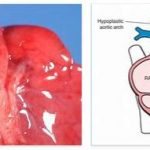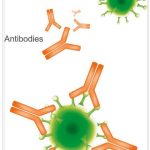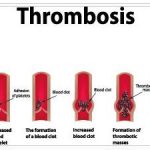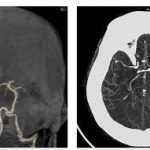Medicine understands Plummer-Vinson syndrome as a triad of dysphagia, iron deficiency and atrophy of the esophagus, which occurs as a result of long-standing iron deficiency. The therapy is causal, in that the iron deficiency is compensated for and the symptoms thus recede. The untreated syndrome favors carcinomas.
What is Plummer-Vinson Syndrome?
Plummer -Vinson syndrome is a complex of symptoms resulting from long-standing iron deficiency. The syndrome is also known as sideropenic dysphagia or Paterson-Brown-Kelly syndrome. The disease is named after US internist HS Plummer and surgeon P. Vinson, who first described the symptom complex in the 20th century. See polyhobbies for Meanings of Humeral Head Fracture.
Characteristic of the Plummer-Vinson syndrome are primarily trophic disorders. Nutritional disorders in the innervation region of nerves are known as such. In addition to discoloration of the skin, thermoregulation disorders sometimes occur as part of a trophic disorder. The syndrome is counted among the anemias in the broadest sense, since the symptoms are based on iron deficiency anemia.
Exact data on the prevalence of the disease do not exist, but the syndrome is thought to be rare. Women of European descent in the fourth to seven decades of life are most frequently affected. Nevertheless, the disease has also been observed in children and adolescents.
Causes
Plummer-Vinson syndrome is caused by iron deficiency anemia that lasts for a long time. In the case of long-term and severe iron deficiency, atrophies form on the mucous membranes, which are often accompanied by submucosal inflammatory reactions. The mucous membranes of the oral cavity and esophagus are predominantly affected by these atrophies in the context of iron deficiency in the sense of Plummer-Vinson syndrome.
Due to the disturbed growth and the ongoing regeneration, membranes develop in the esophagus, which cause swallowing difficulties and make swallowing painful, for example. There are many other factors to consider as the primary cause of iron deficiency.
In addition to malnutrition, for example, genetic predisposition can be involved in the occurrence of the syndrome. The same applies to autoimmune processes. The relevance of these additional factors is currently the subject of research and has therefore not yet been conclusively confirmed.
Symptoms, Ailments & Signs
Plummer-Vinson syndrome usually consists of a triad: in addition to dysphagia, there is iron deficiency anemia and esophageal atrophy. Dysphagia may or may not be associated with pain. The swallowing disorder often increases with the years of its existence. Since it primarily affects solid foods, it often causes weight loss.
Patients with Plummer-Vinson syndrome also suffer from the typical symptoms of anemia. In addition to weakness, these symptoms include marked pallor, easy fatigability, and sometimes tachycardia. In addition, some patients suffer from glossitis, cheilitis in the corners of the mouth, or nail changes such as koilonychia.
Both the spleen and the thyroid of the patient may be enlarged. Splenomegaly is another conceivable symptom. If left untreated, Plummer-Vinson syndrome can cause atypia or dysplasia of the upper gastrointestinal tract epithelium and must therefore be understood as a risk factor for cancers such as esophageal carcinoma or squamous cell carcinoma.
The development of carcinomas from Plummer-Vinson syndrome usually takes some time and can be prevented in most cases with timely treatment.
Diagnosis & course of disease
Diagnosis of Plummer-Vinson syndrome is based on medical history and blood work. The blood count shows iron deficiency anemia with a typical hypochromic-microcytic aspect. The iron deficiency can be confirmed by the laboratory diagnostic determination of serum iron or ferritin.
In order to confirm the suspected diagnosis of Plummer-Vinson syndrome, the attending physician can demonstrate the pathologically typical changes in the mucous membranes using gastroscopy on the esophageal membranes. Histopathological tissue changes are examined by means of a biopsy and thus the removal and examination of mucosal tissue.
A biopsy can also confirm or reject the suspicion of pre-existing carcinomas of the upper digestive tract. If Plummer-Vinson syndrome is treated early, the prognosis is good. If left untreated, however, the risk of carcinoma is high and the prognosis is correspondingly unfavorable.
Complications
Because of Plummer-Vinson syndrome, those affected primarily suffer from anemia. This leads to a significantly reduced resilience and persistent fatigue of the patient. Those affected appear just as pale and no longer actively participate in everyday life. Weight loss can also occur due to Plummer-Vinson syndrome and is usually associated with other deficiency symptoms.
Plummer-Vinson syndrome increases the risk of various types of cancer, so those affected are usually dependent on various therapies and check-ups. Likewise, the Plummer-Vinson syndrome can lead to psychological complaints or upsets, whereby in the worst case it can also lead to depression. The patient’s quality of life is significantly reduced and limited by this disease.
As a rule, the diagnosis is made relatively quickly, so that early treatment of Plummer-Vinson syndrome is also possible. The treatment is carried out with the help of medication or through various interventions. Complications do not usually occur and there is always a positive course of the disease. Early diagnosis and treatment of Plummer-Vinson syndrome usually does not reduce the patient’s life expectancy.
When should you go to the doctor?
Plummer-Vinson syndrome must be treated by a doctor in any case, as it does not heal itself and the symptoms usually continue to worsen. Since Plummer-Vinson syndrome also promotes the occurrence of tumors, patients are dependent on regular examinations in order not to reduce their life expectancy. The doctor should be consulted for this syndrome if the person affected suffers from swallowing difficulties, which can occur at a young age. Sudden weight loss can also indicate the syndrome and must be examined by a doctor.
The corners of the patient’s mouth are often chapped and there is severe paleness, tiredness and slackness. In many cases, discoloration of the nails also indicates Plummer-Vinson syndrome and should be examined by a doctor. The diagnosis and treatment of this disease is carried out by various specialists and always depends on the exact severity of the disease. In most cases, this results in a reduced life expectancy.
Treatment & Therapy
The causal treatment is in the foreground of therapy in Plummer-Vinson syndrome. The causative iron deficiency must be treated and ideally compensated. To treat iron deficiency, oral administration of iron supplements is usually prescribed, which can last for several months, depending on the severity of the syndrome. In exceptional cases, the preparations can also be administered parentally.
Once patients’ underlying anemia improves, symptoms of Plummer-Vinson syndrome usually resolve on their own. If iron supplementation is not sufficient to resolve the symptoms, the affected areas of the esophagus can be mechanically dilated. As a rule, however, Plummer-Vinson syndrome is already effectively treated by the preparations.
However, if the lumen of the esophagus has become significantly meshed, the dysphagia persists and further corrective measures must follow. For example, a rupture of the esophagus mesh comes into question as such. After completion of treatment, close monitoring of patients is recommended.
Even after the symptoms have been eliminated, patients with Plummer-Vinson syndrome are at an increased risk of developing squamous cell carcinoma in the pharynx or esophagus. Monitoring should ideally take place every three months in order to detect any cancer cells early enough.
Prevention
Plummer-Vinson Syndrome is preventable. Since iron deficiency anemia is the cause of the phenomenon according to the current state of research, a balanced diet can help prevent it. If iron deficiency does not occur in the first place, the symptom complex does not occur.
Aftercare
In most cases, those affected with Plummer-Vinson syndrome have very few or no special measures or options for aftercare. The priority here is the rapid and, above all, early detection of the disease so that the symptoms do not worsen further or other complications occur.
The person concerned should therefore contact a doctor at the first sign of Plummer-Vinson syndrome and initiate treatment. Most of those affected are dependent on taking various medications and supplements in order to relieve the symptoms permanently and, above all, correctly. It should always be taken regularly and the correct dosage of the medicines should be observed so that further complications do not occur.
Since Plummer-Vinson syndrome also significantly increases the likelihood of tumors, those affected should have regular check-ups by a doctor. This can also prevent further spread of the tumor. Those affected are often also dependent on the help and support of their own families, which can also prevent psychological upsets or depression. Loving and intensive conversations with one’s own family are often very important.
You can do that yourself
Since the cause of Plummer-Vinson syndrome can be traced back to iron deficiency anemia that has persisted for a long time, the doctor treating you will prescribe an iron-containing preparation. However, since iron is mainly absorbed through food, intake can also be supported at home. Highly iron-rich foods are recommended for this purpose.
A particularly high concentration of iron is found in animal products, preferably red meat such as beef. A little less is present in chicken and turkey meat. Vegetable sources are dark varieties of lettuce, such as arugula and lamb’s lettuce. Cereals such as oats, millet and buckwheat also contain iron.
In addition to these foods on the menu, it should also be noted that certain components inhibit or facilitate iron absorption. You should always make sure that you consume vitamin C before or during meals, for example in the form of orange juice or fresh fruit. Since caffeine and calcium inhibit the absorption of iron in the body, a gap of one to two hours should be observed between consuming coffee, black tea and dairy products.
Iron absorption through food can therefore be supported. However, treatment with a dietary supplement prescribed by the doctor should not be replaced by diet in Plummer-Vinson syndrome.








